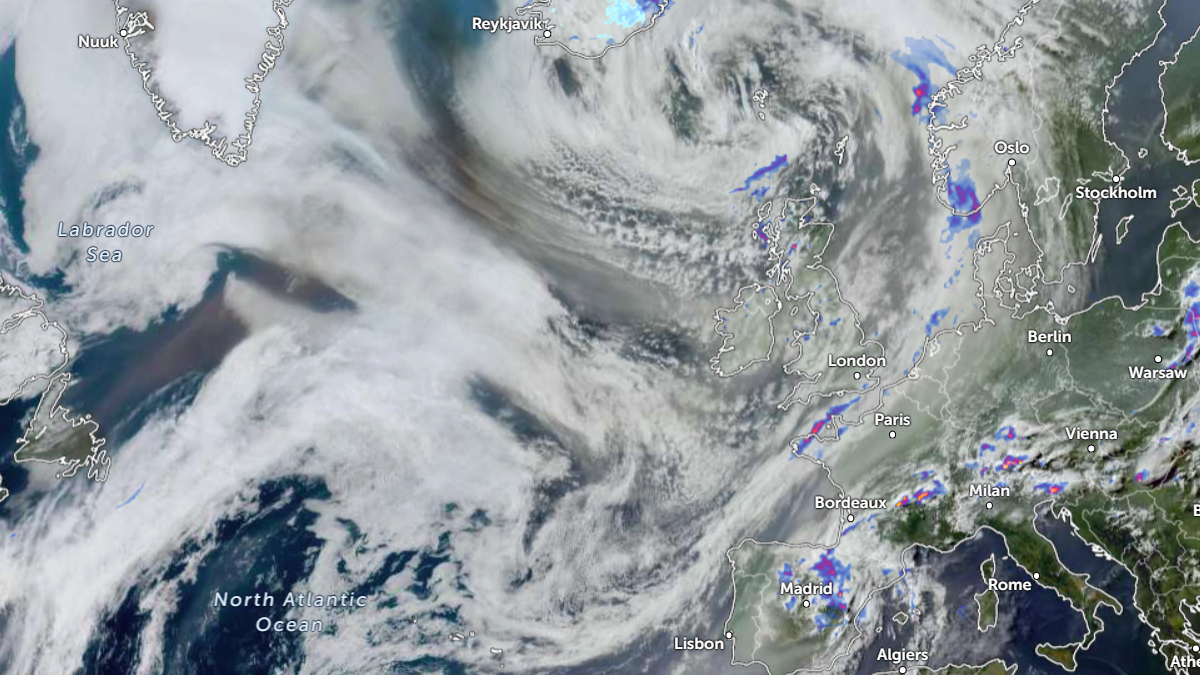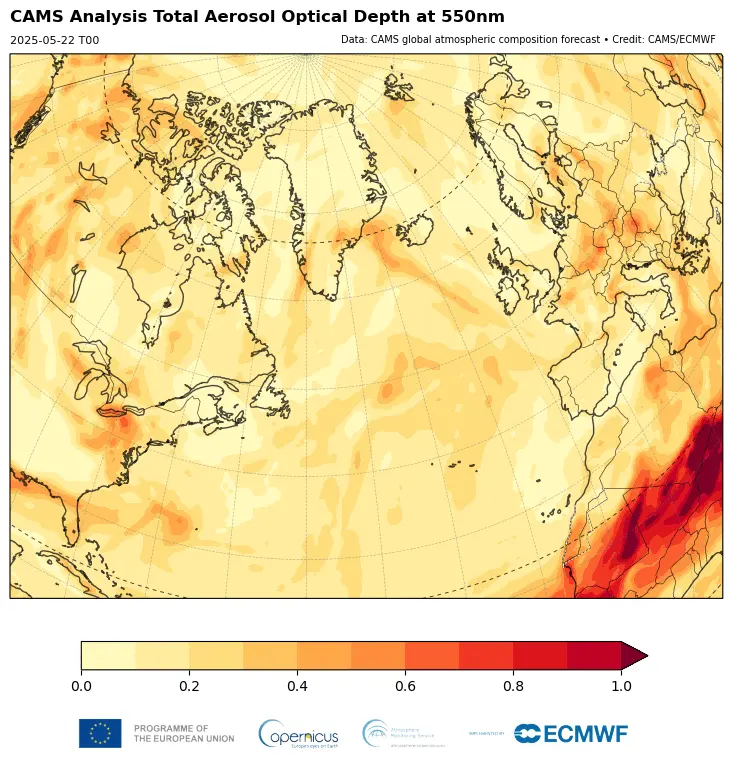Smoke from Canadian wildfires reaches Europe
Smoke plumes from wildfires in Canada have crossed the Atlantic and reached Europe, creating hazy skies across a broad region. The wildfires have released an estimated 56 megatonnes (56 billion kg) of carbon, prompting large-scale evacuations and severely deteriorating air quality across parts of North America.

Satellite image of the smoke from Canadian wildfires with severe weather system near Europe. Credit: EUMETSAT/Meteosat-9, Zoom Earth, The Watchers. Acquired at 16:40 UTC on June 3, 2025
Multiple wildfires erupted in Canada throughout May 2025, affecting the provinces of Saskatchewan, Manitoba, and Ontario. Fire activity intensified in the latter half of the month, resulting in the formation of Pyrocumulonimbus clouds (pyroCb) over the affected areas.
Multiple satellites confirmed that smoke from the Canadian wildfires began crossing the Atlantic by mid-May, reaching the Mediterranean by May 18. By May 19, smoke plumes were reported over Greece and the eastern Mediterranean.
Observations by the Copernicus Atmosphere Monitoring Service (CAMS) showed the plume most clearly at an altitude of 9 000 m (29 528 feet).

A second, significantly larger smoke plume was observed crossing North America and moving into the Atlantic during the last week of May.
CAMS analyses of total aerosol optical depth showed the long-range plume transport reaching northwestern parts of Europe on June 1. Part of the plume crossed the Azores before recirculating around the North Atlantic. Additional smoke plumes are forecast to reach Europe during the first week of June.

More than 25 000 people have been evacuated from the provinces of Saskatchewan, Manitoba, and Ontario due to wildfires, which have significantly affected air quality in those regions and parts of the United States.
Based on CAMS observations, the wildfires have released approximately 56 megatonnes (56 billion kg) of carbon as of June 2, second only to emissions recorded during the same period in 2023.
The estimated total wildfire carbon emissions for Manitoba, Saskatchewan, and Alberta in May and June were significantly higher than average.

For Manitoba, the total estimated fire emissions up to June 2 are the highest in the CAMS record at approximately 13 megatonnes (13 billion kg) of carbon, about three times the previous record for the same period in 2023. Saskatchewan ranks second, with 2023 being the highest previously recorded.

A significant severe weather outbreak is forecast across Europe from June 3 to early June 4, with multiple regions under Level 2 warnings for large hail, damaging winds, heavy rainfall, and isolated tornadoes.
Smoke from the wildfires is present in the upper atmosphere above areas experiencing severe weather, creating hazy skies across a broad region.

Wildfires have also been burning in parts of far eastern Russia since the beginning of April, particularly in the Republic of Buryatia and Zabaykalsky Krai, near the borders with China and Mongolia.
According to CAMS, carbon emissions in Russia’s Far Eastern Federal District are at their highest level for this time period since 2018.
The wildfires in Russia have also affected areas farther away, with forecasts indicating smoke transport toward northeastern China and northern Japan, impacting air quality in those regions. Other plumes have reached as far as the Arctic.
Read more:
Rishav is a skilled researcher specializing in extreme and severe weather reporting. He combines exceptional research capabilities with scientific precision to deliver clear, data-driven articles. Known for uncovering critical information, Rishav ensures his work is accurate, insightful, and impactful. His passion for both science and literature fuels his dedication to producing high-quality news articles. You can reach him at rishav(at)watchers(.)news.



Commenting rules and guidelines
We value the thoughts and opinions of our readers and welcome healthy discussions on our website. In order to maintain a respectful and positive community, we ask that all commenters follow these rules.